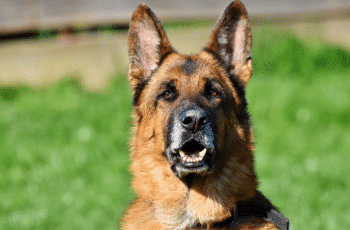Dog ownership is a long-term commitment, physically, mentally, emotionally, and financially. So it is important that as with any decision we make in life, we think things thoroughly before making the final decision. Look at the pros and cons. Consider everything, discuss it with friends and family.
Having a dog in your life can bring you love and companionship. Dogs are devoted, loyal. But it is a responsibility—a whole lifetime. So you need to seriously think if you have what it takes to be a responsible dog owner.
 Tips to Consider
Tips to Consider
1. Look at the lifestyle you live. What do you love to do? Are you athletic? If you are, then a dog with a low energy level will not be an appropriate choice.
Are you obsessive about cleanliness? Then a dog that sheds too much is not the right choice.
Consider you and your family’s personalities, activities, schedules before thinking of getting a dog.
2. Make a list.
Sit down and write the qualities you want in a dog. You need to think about the size, energy level, grooming needs, temperament. Why do you want a dog? Do you have children? Your answers to these questions will guide your choice of the correct dog for you and your family.
3. Choose the Breed
Look at your list of ideals and match it with a dog breed that embodies those characteristics. Do your research, talk to other dog owners, meet dogs so you can learn more and get a feel for the dog that is right for you and your family. Ask questions?
4. Pick your Pet. Either you find a breeder or visit shelters/adoption agencies.
5. Dog proof your home. Check that your future dog can be contained in your property. Check your yard and fence for potential areas of escape.
6. Prepare the things your dog will need. Get a collar, a bed, some toys. Find your veterinarian.
7. When you bring your dog home, give your dog a chance to adjust. Show his crate or bed, where his food and water are, and then leave to explore his new surroundings.
8. Name your dog.
9. Introduce your dog to your family and other pets gradually. Do not overwhelm your dog by introducing them all at the same time. Pace it. Do it slowly.
10. House train. Choose a method of house training: crate, paper, or litter box, and everybody will enforce it consistently. Praise your dog.
11. Set House Rules. Teach your dog from the beginning what is and what is not appropriate behavior.
12. Visit your veterinarian so you can get the proper guidance for your dog’s diet, behavior, activity, vaccination schedule, answers to your questions.
13. Provide good dog food.
14. Exercise. Take your dog for walks, let them run in the yard. Play with them. It benefits you and your dog.
15. Prevent disease. Repel fleas and ticks.
16. Observe and learn your dog’s patterns. Know your dog’s pattern in eating, drinking, sleeping, and relieving himself.
17. Provide Chew Toys. Dogs never outgrow the need to chew, so provide a variety of chew toys to satisfy your dog’s urge to chew.
18. Bath your dog.
19. Talk to your dog. He may not understand what you are saying, but they enjoy the sound of your voice. Use different voice levels to praise or correct your dog’s behavior.
 20. Groom your dog. Clip those nails and clean those teeth.
20. Groom your dog. Clip those nails and clean those teeth.
21. Give treats as a supplement to his regular diet. It is also good as a training aid.
22. Rotate your toys. Keep some toys out of sight for a month and then bring them out again. This will entertain, and your dog will enjoy them as much as when you first got them
23. Give them time. Pet them, talk to them, play, and laugh with them. You may have been working all day, and your dog has been waiting for your return. Let your dog know you value their company.
24. Plan activities with your dog. Include them in family activities. Supervise when the dog is playing with children.
25. Train your dog the basic commands: sit, stay, come, and down.
26. Socialize your dog. Keep them active by giving him simple tasks to do. Teach him to fetch.
27. Obedience classes.
28. Don’t leave leavings. Always carry a plastic bag when you walk your dog to pick up any waste and dispose of it properly. Failure to clean after your dog is disrespectful to your neighbors.
29. Know your breed health risks. Prevent obesity.
30. Protect your dog from poisonous substances around the house–secure potential poisons. Have your veterinarians’ number visible in case of accidental ingestion.
31. Adjust to your dog’s changing needs. As they grow, their activity levels, their temperaments may change.
32. When the time comes, don’t prolong your dog’s suffering. Arrange to end his life humanely.
33. Keep your dog safe. Your dog should wear an identification tag that has your name, address, and phone. A microchip is an option. Take pictures. A current photo of your dog will be important in the event he gets lost.
34. Protect your dogs from extremes of temperature. Provide adequate shelter.
35. When traveling in a car, do it safely. A crate, harness to a seat belt. Do not let your dog ride free in the back of a pickup truck, or hang his head out of the car’s window.
36. If you have to go away, make the proper arrangements: a pet-sitter, dog kennel for boarding.
37. Have a disaster plan. Prepare your dog’s disaster kit too. Establish an emergency contact in case you have to be in a hospital or other emergency.
38. Make a will. Make arrangements for who will care for your dog in the event of your death.
39. Breed responsibly. Spay or neuter.
40. If you can, get another dog. Your dog needs a friend too during the times that you cannot be with them. They also need friends and companionship.
 A Dog’s Love
A Dog’s Love
When we care for our dogs, we experience their love and loyalty. There is a bond created, and we need to nurture that.
Research has shown that having a dog has health benefits. They provide protection, companionship, and unconditional love.
Some may even say they prefer the company of dogs over humans. Why is that? Because we are the center of their universe and devoted to their owner tills their last breath.


